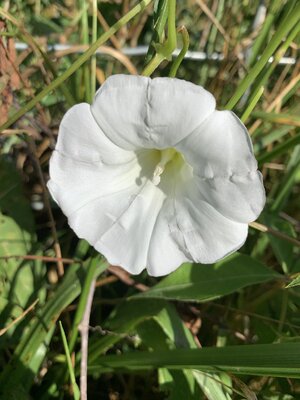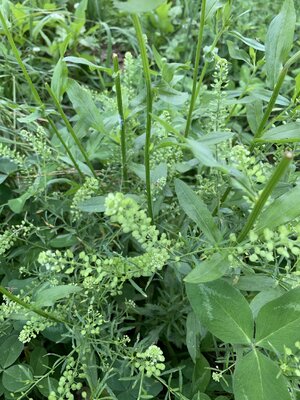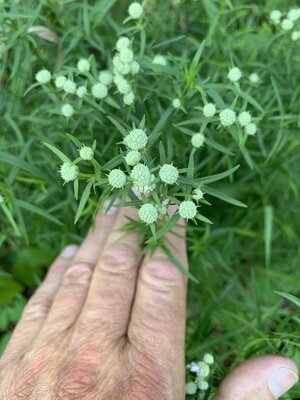Native Hunter
Well-Known Member
Those bees have a haven to feast on. Lots of black eyed Susan down our way in earlier summer
Watch for it to be browsed early in the spring. That’s when I see the most use.
Those bees have a haven to feast on. Lots of black eyed Susan down our way in earlier summer
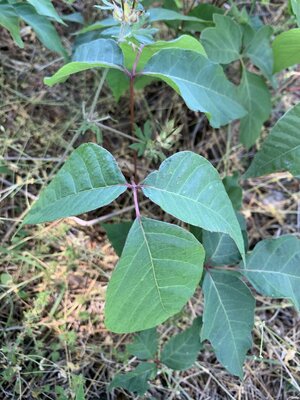
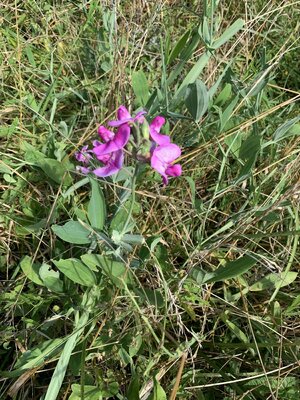
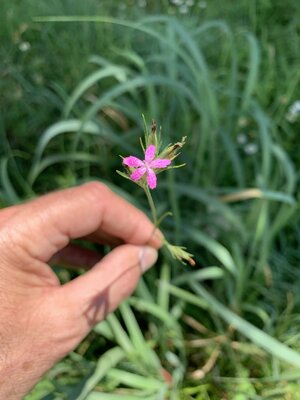
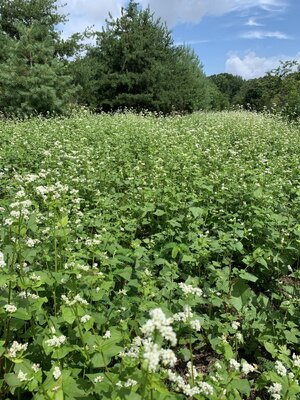
I did quite a bit of walking on our place yesterday hanging stands. The corn planted into the ag ground was rained on heavily the night after planting and as a result much of the corn, especially in the low spots didn’t come up. Maybe because he saw it as a lost cause, he didn’t spray glyphosate again after the corn gained height. The result has been weeds flourishing in parts of the field, feasting on the nitrogen I’m sure. It probably looks like a nightmare to a farmer, but the deer are loving it. The smorgasbord of forbs are getting pounded by the deer as well as being used for cover. I couldn’t help but think of this thread, as I walked past variety after variety of weeds that had been browsed heavily. These deer have options too, there’s over 480 acres of beans to be had nearby. I’m betting the quail are loving it as well.
Good read. Some random observations; Maybe God put poison ivy and rattlesnakes on this earth so that we humans have something to practice our machetes on.Time to walk again and today we will look at three plants:
Pic of Poison Ivy (but see notes below about variability of appearance):
- Poison Ivy
- Everlasting Sweet Pea
- Deptford Pink

Facts about Poison Ivy:
Pic of Everlasting Sweet Pea
- Many humans have severe allergic reactions to poison ivy, but most animals are immune to the poison. I have read that other than primates that hamsters are the only other animals known to have allergic reactions.
- Deer and rabbits will readily eat all parts of the plant. It isn’t uncommon to see it browsed at any time of the year.
- The appearance of the plant can be highly variable. It can assume the form of a low shrub or it can be a long woody vine that can climb high in trees.
- In my prairie I generally see it around the edges but seldom out in the middle of the fields.

Facts about Everlasting Sweet Pea:
Pic of Deptford Pink
- This is a perennial vine, but there are several similar wild peas that can be annual or perennial. The wildlife value of them are similar.
- The seeds are poisonous, but the foliage is browsed by deer and rabbits. I would rate it as a medium preference browse.
- This plant can be very competitive and take a lot of ground up in some areas. In my fields, that hasn’t been the case. I only see it scattered here and there.

Facts about Deptford Pink:
That’s it for today guys. We have made it up to my buckwheat patch. It was so dry that I thought it wasn’t going to come up, but a few rains did the trick. I’m going to go check for browsing and we will walk again soon.
- This is a small and beautiful wildflower that insects will use, but I have never seen it browsed by deer.
- I only see it occasionally, and it isn’t very competitive in my fields.

Good read. Some random observations; Maybe God put poison ivy and rattlesnakes on this earth so that we humans have something to practice our machetes on.
You have some crownvetch growing in that otherwise perfect buckwheat patch. Better spray it with roundup before it attracts some deer and they eat your nice buckwheat too.
Pretty sure I got a rash from just seeing that poison ivy picture.
I'm enjoying your prairie tour - I find myself sending links to your posts often to my father and uncle as examples of what I have in my head for our property. They get glimpses of light before returning to "our deer are eating the fescue, why would we change what is working?".
Just got to keep chipping away and making changes when I get an opportunity - I do have somewhat free reign to work the immediate area around my stand. I have finally killed out most of the fescue and sericea lespedeza, only to be inundated with Broomsedge Bluestem. While not the greatest, it does stand up through rifle season for us, which gives the deer a lot more security feeling than the "flat" fescue and dead sericea lespedeza. Hunting an electrical right away between two oak flats - anything that slows the deer crossing is a plus in my book.
Talking about a rash, once a city slicker gets around to using poison ivy for toilet paper one time, they will be 100% country from there on out. (and will be doing all their driving standing up for a while)Pretty sure I got a rash from just seeing that poison ivy picture.
I'm enjoying your prairie tour - I find myself sending links to your posts often to my father and uncle as examples of what I have in my head for our property. They get glimpses of light before returning to "our deer are eating the fescue, why would we change what is working?".
Just got to keep chipping away and making changes when I get an opportunity - I do have somewhat free reign to work the immediate area around my stand. I have finally killed out most of the fescue and sericea lespedeza, only to be inundated with Broomsedge Bluestem. While not the greatest, it does stand up through rifle season for us, which gives the deer a lot more security feeling than the "flat" fescue and dead sericea lespedeza. Hunting an electrical right away between two oak flats - anything that slows the deer crossing is a plus in my book.
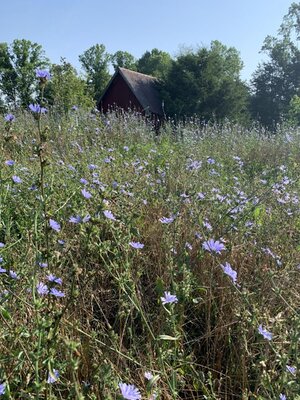
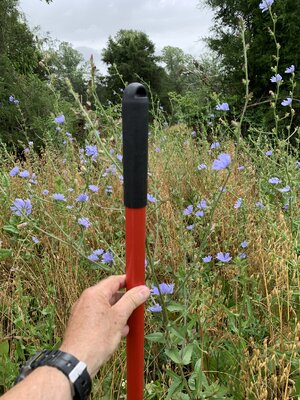
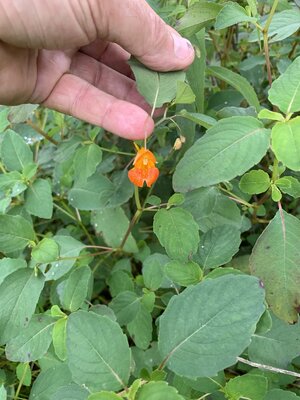
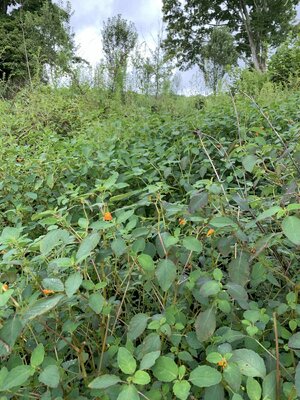
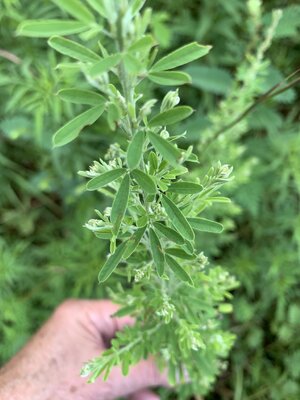
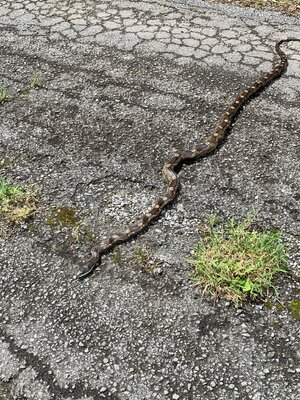
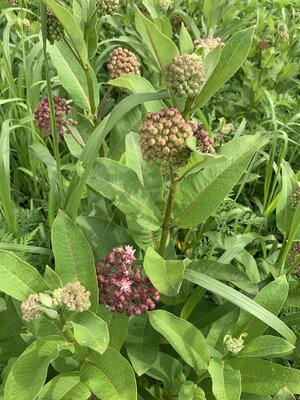

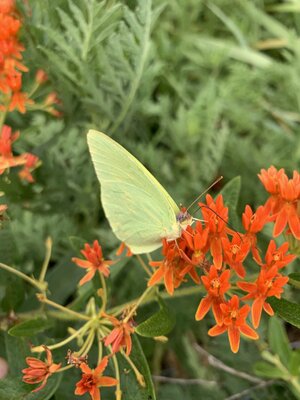
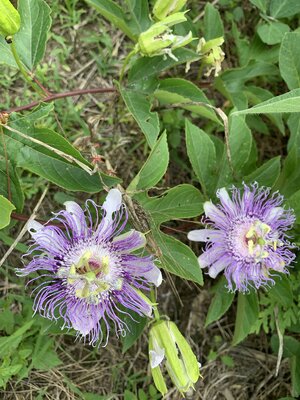

You are correct insects love milkweed. Especially the Monarch. And it can overwhelm poor ph fields.
I laugh about it because there is one internet hunting group I follow that are obsessed w having milkweed pods for determining wind direction. While I agree the seeds are good for that, they get bent out of shape when they find A plant and some even buy the seeds for hunting season. Cracks me up. I could make a million selling them seeds. Of course they also like to chase balloons in The woods.
A beautiful flower along w the goldenrod and many others when in fall bloom.
And did I miss something? You get a new tractor??
Another fact about milkweed; Monarch caterpillars only eat milkweed, therefore the Monarch butterfly is also known as the “milkweed butterfly.” The milkweed plant provides all the nourishment the monarch needs to transform the Monarch caterpillar into the adult butterfly, but these plants are rapidly disappearing, due to the loss of habitat stemming from land development and the widespread spraying of weed killer on the fields where they live. So thanks for leaving some milkweed for the butterflies.Let’s walk some more. We will do a short trip today and look at the two milkweeds that grow on my place and one other plant - Common Milkweed, Butterfly Milkweed and Purple Passion Flower.
Picture of Common Mikweed:

Facts about common milkweed:
Pictures of Butterfly Milkweed:
- There are a host of different insects that feed on this plant.
- Deer and other mammals don't eat this plant because of the bitterness of the leaves and their toxic properties.
- I like seeing them scattered here and there because of the beauty that they bring, but primarily being a deer manager, I wouldn’t want to see a tremendous lot of these plants.



Facts about Butterfly Mlkweed:
Picture of Purple Passion Flower:
- My comments on this plant are pretty much the same as Common Milkweed.
- Even though this plant has less of the milky latex like substance than other milkweeds, deer and other mammals seem to avoid it.

Facts about Purple Passion Flower:
Time to quit walking and start working. A prairie needs a little attention from time to time, and we need some shooting lanes for the hunting season.
- This is not a plant that you will see deer browse.
- It produces green seed pods about the size of a chicken egg. I’ve never seen the pods eaten by anything.
- I do see bees and other insects use the flowers.
- This plant can really become invasive in a new prairie after a gly kill is done and before the grasses and other plants become established. I once saw a 5 acre field taken over by it. A seed company wanted to collect the pods, and I allowed them to do it. They loaded a big horse trailer and two full sized pickups with pods. The leaf springs on the pickups were almost flat.

